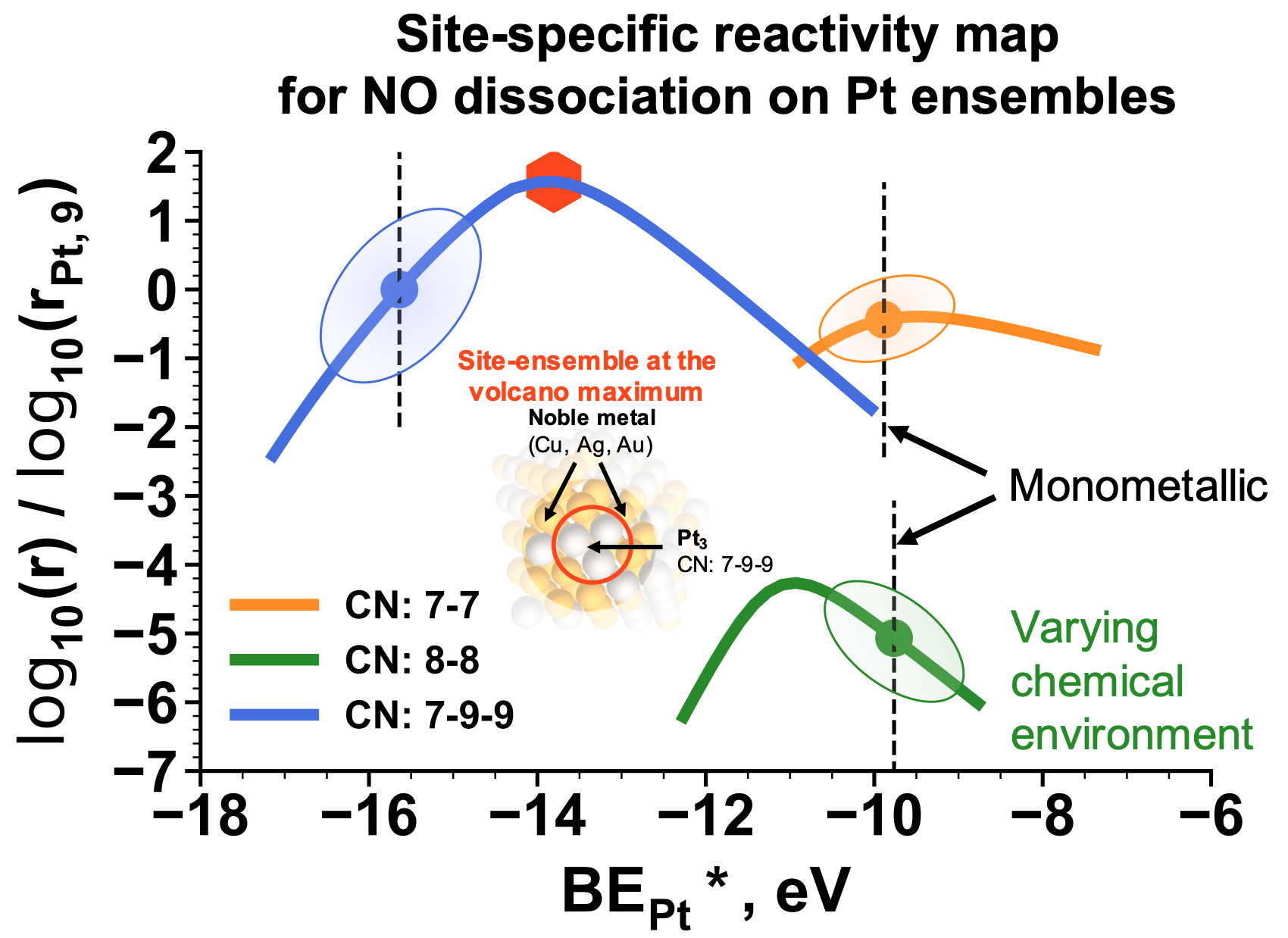2020 Virtual AIChE Annual Meeting
(599b) Including Catalyst Stabilities and Dynamics into Screening Protocols: Site-Specific Volcanos for NO Dissociation
Authors
We address these limitations through a new class of energy correlations that forge robust three-way connections between the structure of active sites, their thermodynamic stability, and the energy space of reaction intermediates [1,2]. Our models include strain effects [3] and rely on only a limited set of parameters derived from simple slab calculations. Nonetheless, they are directly transferable to nanoparticles spanning a broad structure and composition space.
We demonstrate the applicability of our unified stability-reactivity model to screen active-site ensembles by interrogating the effect of site-specific features on catalytic turnovers: We propagate the three-way correlations between active-site structure, stability, and reaction environment through a microkinetic model for NO dissociation. The resulting family of volcanos is site-specific. Through these volcanoes, we can simultaneously determine the stability of nanoparticles and reactivity trends. Our model backtracks the impact of our descriptor, the site stability, on turnover frequencies, adsorbate coverages, and the degrees of rate control for each elementary step. Since the site stability unites features of structure, composition, and strain within a single continuous descriptor space, we have unified multiple design levers to optimize the stability and reactivity of promising catalyst candidates.
[1] Roling, L.T., Choksi, T.S., Abild-Pedersen, F. Nanoscale, 11, 10, 4438 (2019).
[2] Choksi, T.S., Roling, L.T., Streibel, V., Abild-Pedersen, F. Phys. Chem. Lett. 1852 (2019).
[3] Streibel, V., Choksi, T.S., Abild-Pedersen, F., J. Chem. Phys., 152, 094701 (2020).
